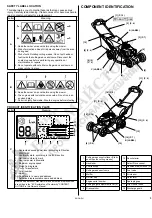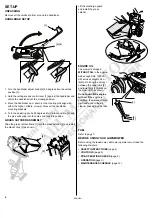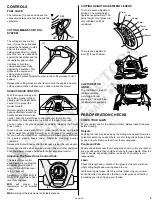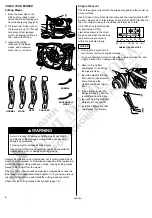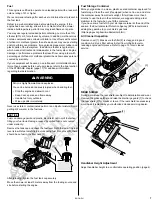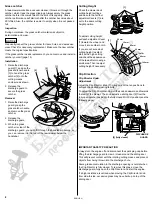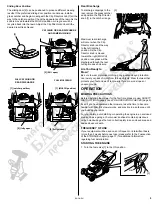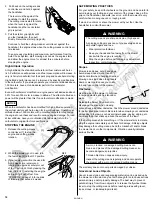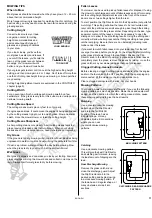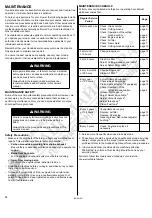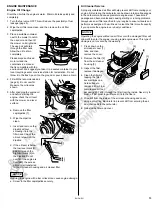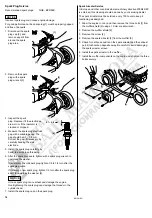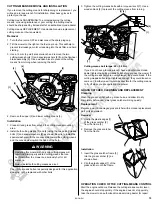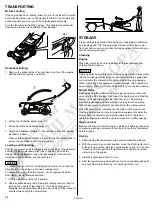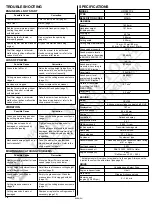
14
ENGLISH
Spark Plug Service
NOTICE
Incorrect spark plugs can cause engine damage.
For good performance, the spark plug [1] must be properly gapped
and free of deposits.
1. Disconnect the spark
plug cap [2], and
remove any dirt from
around the spark
plug area.
2. Remove the spark
plug with a spark
plug wrench [3].
3. Inspect the spark
plug. Replace it if the electrodes
are worn or if the insulator is
cracked or chipped.
4. Measure the spark plug electrode
gap with a suitable gauge. The
gap should be 0.7 ~ 0.8 mm.
Correct the gap, if necessary, by
carefully bending the side
electrode.
5. Install the spark plug carefully, by
hand, to avoid cross-threading.
6. After the spark plug seats, tighten with a spark plug wrench to
compress the washer.
If reinstalling the old spark plug, tighten 1/8 to 1/4 turn after the
spark plug seats.
If installing a new spark plug, tighten 1/2 turn after the spark plug
seats to compress the washer [4].
NOTICE
A loose spark plug can overheat and damage the engine.
Overtightening the spark plug can damage the threads in the
cylinder head.
7. Install the spark plug cap on the spark plug.
Spark Arrester Service
In Europe and other countries where machinery directive 2006/42/EC
is enforced, this cleaning should be done by your servicing dealer.
The spark arrester must be serviced every 100 hours to keep it
functioning as designed.
1. Allow the engine to cool, and then remove the three bolts [1] from
the muffler shield [2] using a 10 mm socket wrench.
2. Remove the muffler shield [2].
3. Remove the screw [4].
4. Remove the spark arrester [3] from the muffler [5].
5. Check for carbon deposits on the spark arrester and the exhaust
port. Brush carbon deposits away. Be careful to avoid damaging
the spark arrester screen.
6. Install the spark arrester in the muffler.
7. Install the muffler components on the engine, and tighten the three
bolts securely.
Recommended spark plugs:
NGK - BPR5ES
[2]
[1]
[3]
0.7 ~ 0.8 mm
[4]
[5]
[4]
[2]
[3]
[1]



